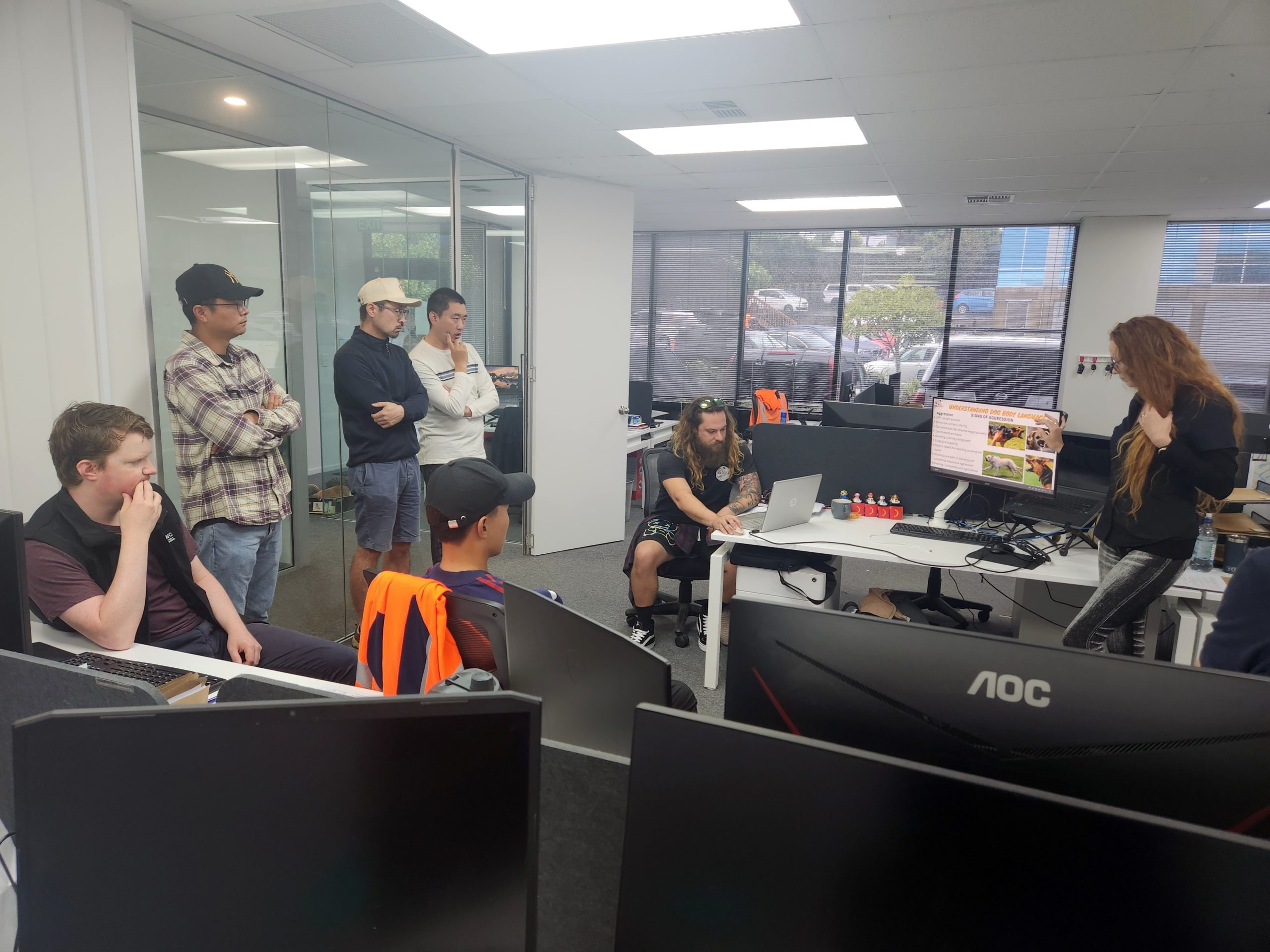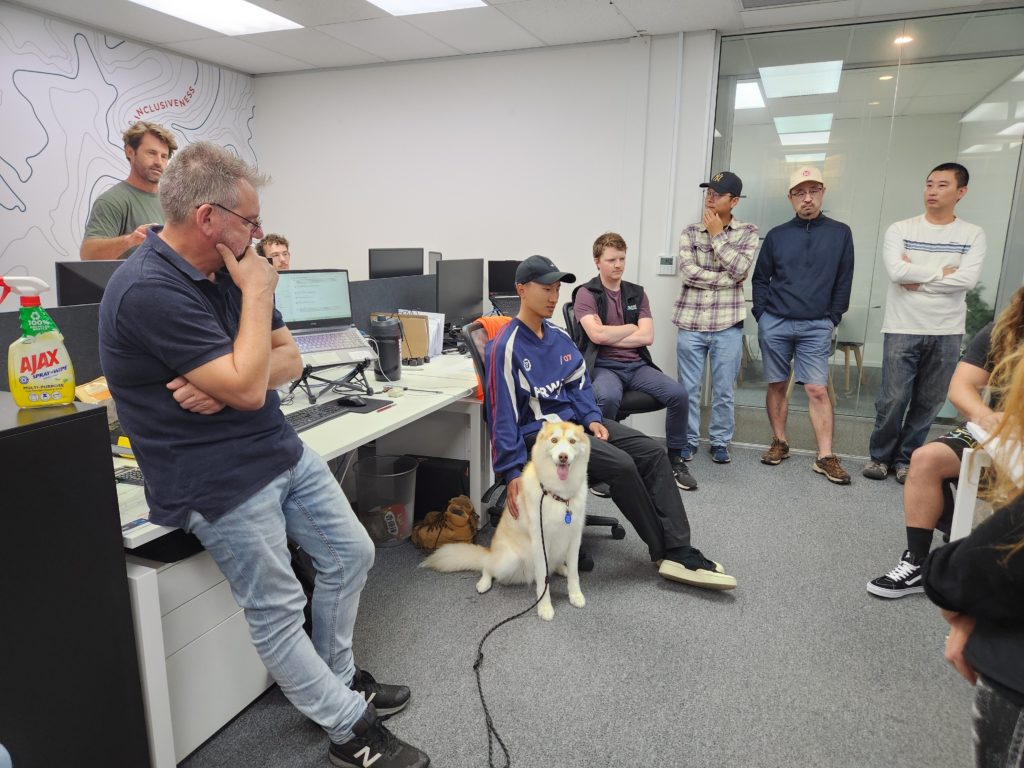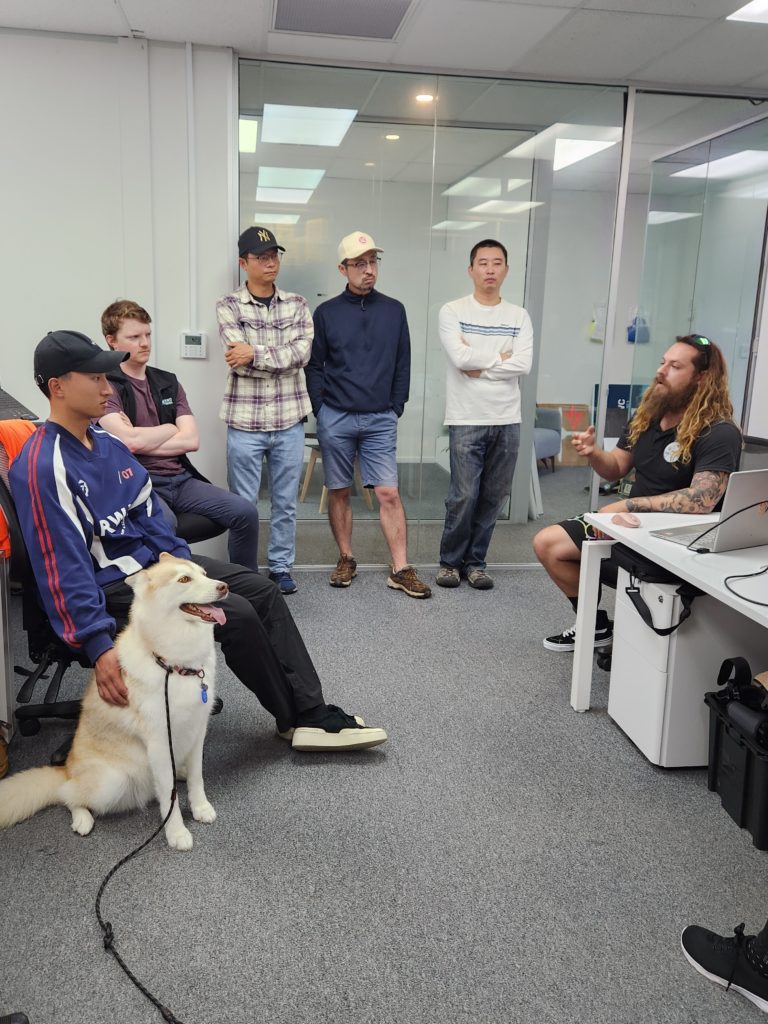
Unleashed Dogs & KWC Team: A Collaborative Training Session on Dog Behaviour
Today at KWC, we had the absolute pleasure of welcoming the expert team from Unleashed Dogs for an insightful dog behavioural training session. The session, led by the fantastic Sam and Reuben, focused on the key skills needed to distinguish between friendly and aggressive dogs, and most importantly, how to handle a situation when confronted with an aggressive dog on site. This training was aimed to give our surveyors the skills to be more comfortable when they encounter dogs while completing surveys.
How to Determine a Friendly Dog vs. An Aggressive Dog
One of the first things Sam and Reuben emphasized was the importance of observing body language. Dogs, like people, communicate through posture, eye contact, and facial expressions. Here are a few key takeaways from their session:
Friendly Dog Cues: A friendly dog typically has relaxed body posture, a wagging tail, and soft, relaxed eyes. They will approach you in a non-threatening way and may even show their belly as a sign of trust.
Aggressive Dog Cues: Aggression in dogs often manifests through stiff body language, a tail held high and rigid, direct eye contact, and ears pinned back. In some cases, a dog might growl, snarl, or bark in a warning. Reuben and Sam reminded us that an aggressive dog is often in a fearful state and is trying to protect themselves or their space.
What to Do When Confronted with an Aggressive Dog
Understanding how to handle an aggressive dog can be the difference between a peaceful resolution and a potentially dangerous situation. Here’s what Sam and Reuben taught us:
Stay Calm: If you are confronted by an aggressive dog, the first rule is to stay calm. Dogs can sense fear and tension, and reacting in a panicked manner can escalate the situation.
Avoid Direct Eye Contact: Staring into a dog’s eyes can be interpreted as a challenge. Instead, keep your body side on and use your peripheral vision to keep an eye on the dog.
Don’t Turn Your Back: Turning your back on an aggressive dog can trigger a chase or attack. Always keep the dog in your peripheral vision and slowly move to a safe location.
Use a Barrier: If you have anything in hand, like a bag or a jacket, use it to create distance between yourself and the dog. Sam and Reuben also suggested standing behind a barrier if possible like a fence, gate or car.
Back Away Slowly: If you can, slowly back away from the dog, giving it space and time to calm down.
In Case of a Bite: In the unlikely event of a bite, Sam and Reuben advised immediate medical attention and reporting the incident. Prevention is always better, but being prepared is equally important.
A Big Thank You to Unleashed Dogs
We’d like to extend a huge thank you to Sam and Reuben from Unleashed Dogs for sharing their knowledge and expertise with the KWC team.


